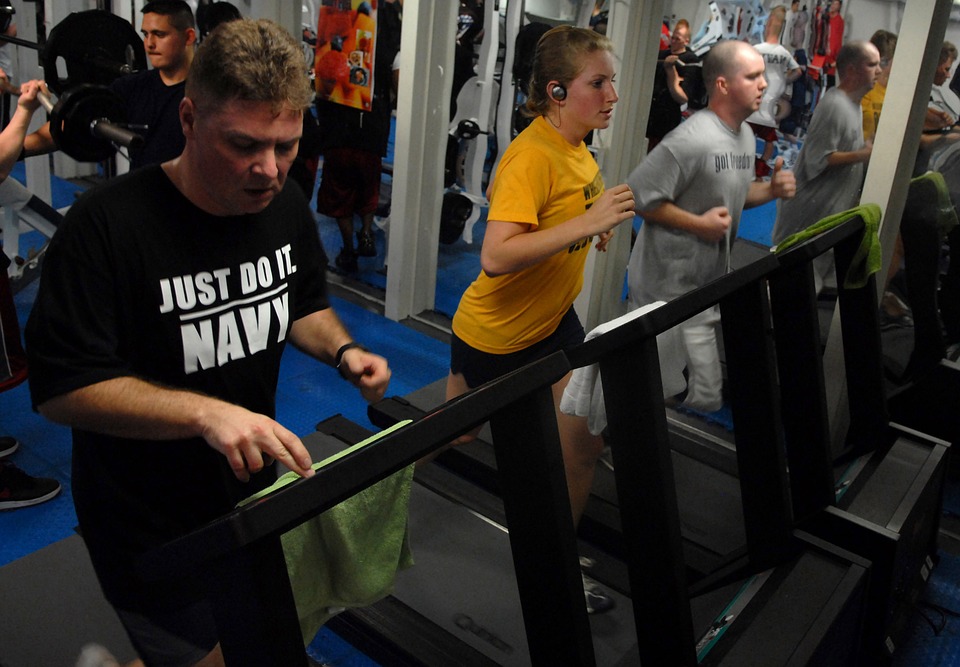After months of deliberation, you’re finally starting on a weightlifting program.
Congratulations on taking the first step! Weightlifting – as a hobby or a sport – can be a challenging and rewarding activity.
However, weightlifting can also be risky. Depending on what kind of exercises you do and your targets, you might put your body under tremendous stress. The wrong technique, routine, or diet can easily cause injuries.
This is why I’m sharing 4 unbeatable tips you should follow if you’re starting a beginner’s weightlifting program.
Cultivate the Right Environment
There is a longstanding belief among powerlifters that at a competitive powerlifting event, you will beat your best lifts by at least 5-10%.
The usual reason for this boost is the adrenaline rush that comes from lifting in a competitive environment. When you have people encouraging your every move, you’re likely to lift more.
While you can’t simulate the powerlifting meet at your local gym, you can take steps to create a more positive workout environment.
Try these:
- Work out with a partner who has slightly more experience than you. You can learn from the partner’s experience and motivate each other to hit your goals.
- Research shows that people who listen to music have better workouts. You can get great earbuds under $50. Use the at the gym to listen to your favorite tunes.
- Pick a large, airy gym. Make sure that it has all the equipment you need for serious lifting. If you plan to deadlift, for instance, make sure that the gym has a dedicated lifting area.
Mind the Macros
A common refrain among nutritionists and fitness trainers is to mind the macros.
This essentially means that instead of focusing on specific food goals, your target should be to meet your macronutrient requirements.
For example, instead of worrying about protein sources (milk, meat, or supplements), you should focus on getting the approximate amount of nutrients you need (say, 150g of protein, 50g fats, 100g carbohydrates, etc.).
Since you’re starting a weightlifting program, you’ll obviously need more protein than the average person. A 40:30:30 split is a good start. That is, you get 40% of your calories from protein, 30% from carbs, and 30% from fats.
If you’re trying to gain lean muscle alone and are okay with slower gains, increase the amount of protein and reduce the carbs (say, a 60:10:30 split).
Skip the Supplements
The fitness industry excels at making you think that you need the latest and greatest supplements to reach your goals.
The truth is that barring a few, most supplements are unnecessary, especially for the price you pay for them. You can get most of the nutrients you need from a well-rounded diet. Some supplements – such as creatine – have a grossly overstated effect.
Take special care to stay away from heavily marketed, unnatural supplements that promise exponential results. These are very seldom, if ever, approved by FDA. Their long-term effect on the body is untested. Unless you enjoy being a human guinea pig, avoid them altogether.
So what supplements should you really take? Here are a few:
- Whey protein (or pea protein if you’re lactose intolerant/vegan), but only if you can’t get enough protein from your diet.
- A multi-vitamin
- Vitamin D, especially if you live in a cold climate and don’t get enough time outdoors.
- Fish oil, which contains omega-3 and omega-6 fatty acids. This helps reduce joint pain and body fat.
- Nitrate, which is often supplemented through beetroot extract, can help reduce fatigue during a workout.
4. Pick the Right Exercise Program
“What weightlifting program should I choose?”
This is probably one of the most asked questions among beginners. And the answers are hardly ever the same depending on who you ask.
Rather than focusing on specific exercises, your goal should be to build up fundamental movements. Since you’re a beginner, you have neither strength nor muscle memory. Instead of picking complicated exercises, focus on key full body exercises. This will help you build the foundation for a more advanced program.
Some of these fundamental exercises are:
- Deadlifts (back, legs)
- Squats (legs)
- Bench press (chest, shoulders, triceps)
- Pull-ups (biceps, back)
- Shoulder press (shoulders)
These five basic movements workout pretty much every part of the body. Pick a program such as Starting Strength that emphasizes these exercises and you’ll be well set for future weightlifting success.
Starting a weightlifting program as a beginner is never easy. You have to do the right exercises, use the right techniques, and follow it all up with the right diet. These four tips will help you get started on the right foot.





